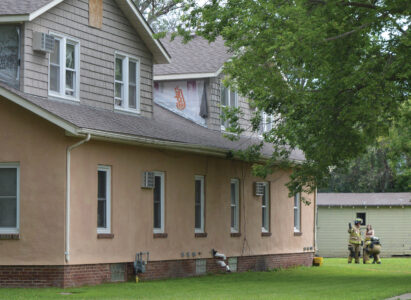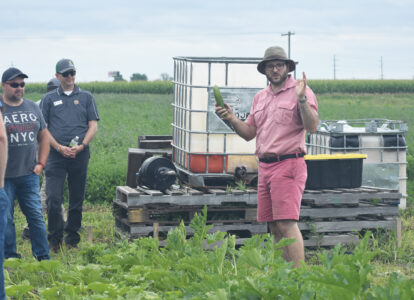Historian surprised to discover history of racism in her hometown

Submitted photo Research by Southwest Minnesota historian Anita Gaul documents racism during the 1920s
Special to the Independent
SLAYTON — Anita Gaul never imagined that the Ku Klux Klan had a history in her hometown, not until she came across a 1920s newspaper article.
While doing research for a history book she wrote about women from southwestern Minnesota who played a role in World War I, she noticed an item from the former Lake Wilson Pilot about a cross burning that took place in nearby Chandler. It became a first step toward tracing 1920s KKK activity throughout the region.
She came back to the topic later, when she had time for some extra research. She is employed as a history instructor for Minnesota West Community and Technical College.
“I saved it in my future projects file,” Gaul said. “It surprised me. I didn’t know the KKK had a history in the region, let alone in my hometown.”
She discovered that KKK recruitment was part of a mid-1920s expansion effort. It focused on bringing the organization to northern states, particularly rural areas of the Upper Midwest.
Between 1922 and 1926, cross burnings took place in nearly a dozen southwestern Minnesota cities. The group also planned events such as lectures and picnics, which were often well attended.
“They marketed themselves as a very Christian, patriotic, family oriented organization,” Gaul said. “Many people went to their events. It was socially acceptable to attend.”
She said the duration of the KKK in the region spanned only several years. She said it might not have disappeared completely, but she could find no sources that referenced it after 1926.
The sudden disappearance occurred at a time that KKK membership declined sharply on a national scale, a trend that Gaul found was influenced by divisions among top level leaders.
“There was a problem between factions on the national side,” she said. “It turned off the rank and file members. What happened regionally was the same as what was seen throughout America.”
A variety of circumstances gave rise to the KKK in the 1920s. The United States was going through a period of strong patriotism after World War I, yet it was mixed with a feeling that immigration, women’s rights and pop culture were taking society in a negative direction.
“Times were changing, and there was a significant share of people who didn’t like the changes,” Gaul said. “They wanted America to stay as it had been in the past.”
She noted that the idea of white racial supremacy in the 1920s extended beyond simply suppressing Negroes. It also included strong prejudice against recent immigrants from southern and eastern Europe such as Italians, Greeks, Poles and Slavs. People of these nationalities were regarded as non-White.
As she made progress with research, she found that some of what the KKK organizers emphasized in the past resembles mainstream political statements made during the past several years.
“I definitely saw connections,” she said. “A few times I wondered if I was really reading about the 1920s rather than today. It was almost spooky to see similarities.”
She said she has a limited amount of documented material, noting that the KKK fell out of favor for many years. As a result, the appearances of the group within the region were generally not talked about.
Some of her best information came from the Cottonwood County Historical Society in Windom. They have documentation of a 1986 interview with an elderly man who had joined the KKK because of the 1920s membership drive.
Her information was included in a grant supported exhibit on the 1920s at the Murray County Museum in Slayton. She made two presentations last winter, and plans to do other events in 2021.
“I don’t have enough to make it book length,” Gaul said. “The exhibit and presentations are good ways to share what I’ve learned. It’s a topic that interests people, but that has never gotten much attention.”
Murray County Museum Executive Director Janet Timmerman said Gauls’ research drew enthusiasm from audience members who attended her program last winter in Slayton.
“It was very well received,” Timmerman said. “Some of the people who attended have heard stories from parents or grandparents about how the KKK was active here in the 1920s. They’ve been interested in what she’s found. It was part of our past.”



